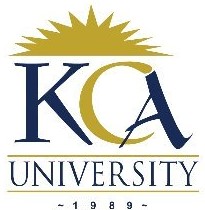
UNIVERSITY EXAMINATIONS: 2018/2019
EXAMINATION FOR THE DEGREE OF BACHELOR OF SCIENCE IN
INFORMATION TECHNOLOGY /BACHELOR OF BUSINESS
INFORMATION TECHNOLOGY
BIT 1305/BBIT 103: COMPUTER NETWORKS/ COMPUTER
NETWORKS AND MANAGEMENT
FULL TIME/PART TIME/DISTANCE LEARNING
DATE: APRIL, 2019 TIME: 2 HOURS
INSTRUCTIONS: Answer Question One & ANY OTHER TWO questions.
QUESTION ONE [30 MARKS]
a) State the IEEE 802 standards for the following
(i) CSMA/CD 1 Mark
(ii) LLC 1 Mark
(iii) Token Bus 1 Mark
(iv) Token Ring 1 Mark
(v) WLAN 1 Mark 1 Mark
b. Explain the encapsulation sequence through the seven layers of the OSI model.
5 Marks
c) Discuss the following:
(i) The limitations of Layer 1 devices 2 Marks
(ii) How Layer 2 devices solve the problems faced by Layer 1 devices 2 Marks
(iii) How Layer 3 devices solver the problems of layer 2 devices. 2 Marks
d. Discuss how WANs differ from LANs in terms of ownership, costs, distance, protocols
and the OSI layers of operation. 10 Marks
e. Discuss how peer-to-peer networks operate and their pros and cons. 4 Marks
QUESTION TWO [20 MARKS]
a) Study the diagram below very carefully:
The computer connected to SF has data to send to the computer connected to LA. Explain in
detail how the data packet is addressed in terms of source MAC address, destination MAC
address, source IP address and destination IP address at each router interface it passes through
until it reaches the destination. 8 Marks

b) WANs use numerous types of devices that are specific to WAN environments. Describe
any five of these devices 5 Marks
c) LAN technologies account for virtually all deployed LANs and specify cabling and
signalling at the physical and data link layers of the OSI reference model. With reference to the
Token Ring Architecture, explain the process of token passing. 7 Marks
QUESTION THREE [20 MARKS]
a) State two advantages and two disadvantages of client/server networks. 4 Marks
b) Intermediary devices connect the individual end devices to the network and can connect
multiple individual networks to form an internetwork. State any five functions performed by
intermediary devices. 5 Marks
c) TCP/IP protocols had several important features that allowed them to meet the need for
worldwide data communication. Explain briefly any three of these features. 6 Marks
d) State five major reasons why computers are networked. 5 Marks
QUESTION FOUR [20 MARKS]
a) Explain briefly the key features of the following core editions of Windows Server 2012:
(i) Windows Server 2012 Datacenter 3 Marks
(ii) Windows Server 2012 Standard 2 Marks
b) State any five factors to consider in defining network topology selection 5 Marks
c) List four (4) functions that are performed by a Network Interface Card (NIC).
4 Marks
d) Describe how the following operations are executed in CSMA/CD:
(i) Collision detection 3 Marks
(ii) Jam signal and random backoff. 3 Marks
QUESTION FIVE [20 MARKS]
KCA University has decided that you are the contractor to design and implement their network at
Ruaraka Campus. With your limited knowledge, you are expected to make some initial decisions
before you commence on the detailed design of the network.
a) Between the OSI reference model and the TCP/IP reference model, which model would
you consider to be more useful and why? 2 Marks
b) What factors would you consider before you decide what type of network operating
system to use on your network? 4 Marks
c) What attributes must your network have in order for it to be considered a well-designed
network? 4 Marks
d) How will you determine how to choose which networking devices to use in your
network? 4 Marks
e) What factors will you consider before choosing the type of media to use? 4 Marks
f) How will you determine which LAN technology to implement in your network?
2 Marks
